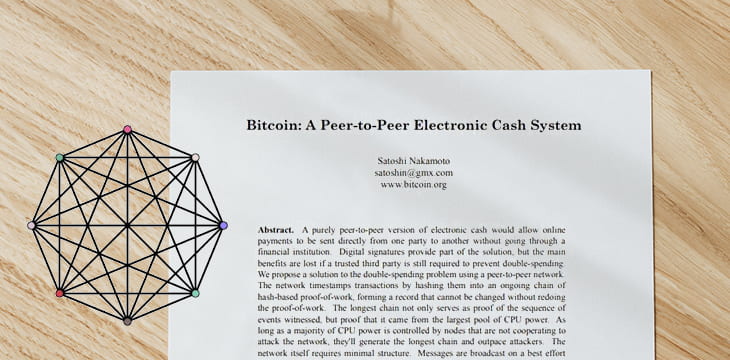|
Getting your Trinity Audio player ready...
|
Bitcoin is secured by incentives, not cryptography—get that into your head now. This latest episode of “Theory of Bitcoin – The White Paper” is all about incentives, and Bitcoin creator Dr. Craig Wright guides Fabriik’s Ryan X. Charles through a mixture of network types and computer history to explain it all.
We left the previous episode with an introduction to networks, and this week continues the story by explaining how participants on a network behave, and why. What inspired you to create Bitcoin’s network structure, Charles asks. It came from research into “small world networks” and wondering how to expand on them, Dr. Wright says. The main difficulty is connectivity between individual nodes, and it’s necessary to build overlay networks on top of that.
Dr. Wright explains why it’s not necessary for every message to be perfect, or reach everyone in the same way. Unlike the X.500 standards used in many electronic directory services today, not every detail has to be perfect and checked multiple times. These days it’s possible to just add extra hardware (he compares it to RAID arrays for storage) to make a network more reliable.
Then there’s the altruism issue
You can’t rely on participants’ altruism alone to secure a network, Dr. Wright says, asking what incentives exist for someone to run a Lightning Network node on BTC. “That’s not how the world works.”
Charles questions whether the pre-1992, or “non-commercial” Internet relied on altruism. Wright points out that even then, there was still plenty of money coming in to fund those systems for research, university departments’ paying for access time to make their own work more efficient—and besides, there was the prestige of having a connected system and “the naughty prestige of breaking in and owning one of the systems… not that I’d know about that one.”
It’s not digital gold!
Dr. Wright often expresses his extreme displeasure for the “digital gold” meme and metaphor that has surrounding Bitcoin since the beginning, saying it demonstrates a lack of understanding of what Bitcoin is. There’s more of that in this episode, with Dr. Wright explaining some of the differences.
There’s a discussion on how predictable and/or limited the gold supply is. The big difference is that with Bitcoin, all the coins were issued only once: when the network first became active. That’s not the case with gold, where new deposits and mines could start at any time, and there are other as-yet-unknown sources.
Dr. Wright is especially irritated at the thought of Nick Szabo’s work having any influence on Bitcoin’s development: “Szabo is trying to re-create E-gold. I couldn’t think of any analogy further apart.” Charles also challenges him with (BSV supporter) George Gilder‘s criticism that a fixed money supply is a problem, saying that tokenization allows a lot more monetary value to be built on top of Bitcoin without being affected by the amount of BSV units themselves.
This can even include national fiat currencies if necessary, as we’ve heard before. They themselves may still rise and fall, independent of the network they’re built on—the main difference is their rules of operation will be more transparent and honest.
Get rich quick and crypto Ponzis
Dr. Wright laments that too much (fiat monetary) value came into Bitcoin too quickly in its early years, skewing the incentives somewhat. Rather than investing in building services that would encourage people to actually use Bitcoin, those sharp increases in price led to hoarding and over-investment in hashing hardware.
Rather than taking a long-term vision, people tried to extract monetary value from Bitcoin and blockchain technology as quickly as they could. That’s especially true of altcoins and ICOs, which were more attempts to copy Bitcoin’s (price) success with a view to cashing out, and little more. Digital assets, including Bitcoin BTC, did actually resemble Ponzi schemes—with no utility or real-world economy there, the only incentive was to drive the unit price up and sell it to newcomer investors.
This is a form of parasitism, and systems do tolerate a certain amount of parasitism, Wright says. But not when parasites are the majority. Unfortunately, that paradigm still exists today and BTC’s attempts to continue it by severely limiting the ability to transact only add to that problem.
As always there’s something new to learn in “Theory of Bitcoin” every week, and viewers are getting a sneak preview of what will one day become a complete educational course. We recommend watching every episode, just to be sure you get everything.
To watch previous episodes of the Theory of Bitcoin, check the Theory of Bitcoin: White Paper YouTube playlist here.

 12-10-2025
12-10-2025 





